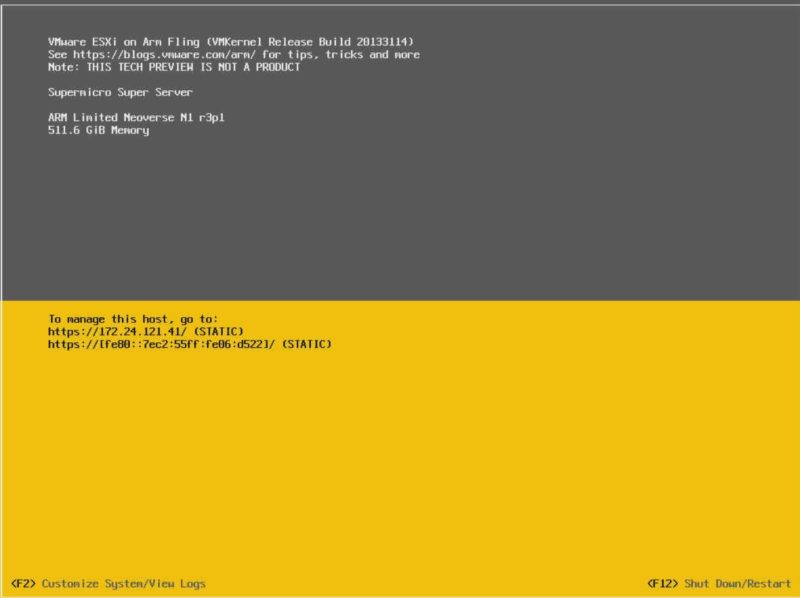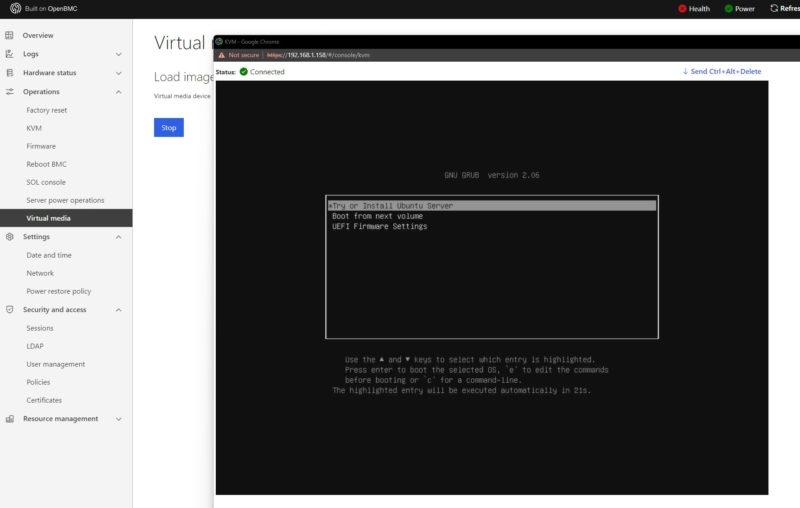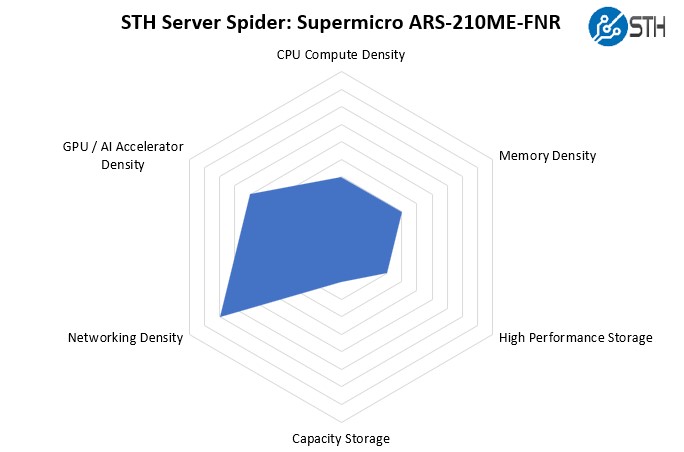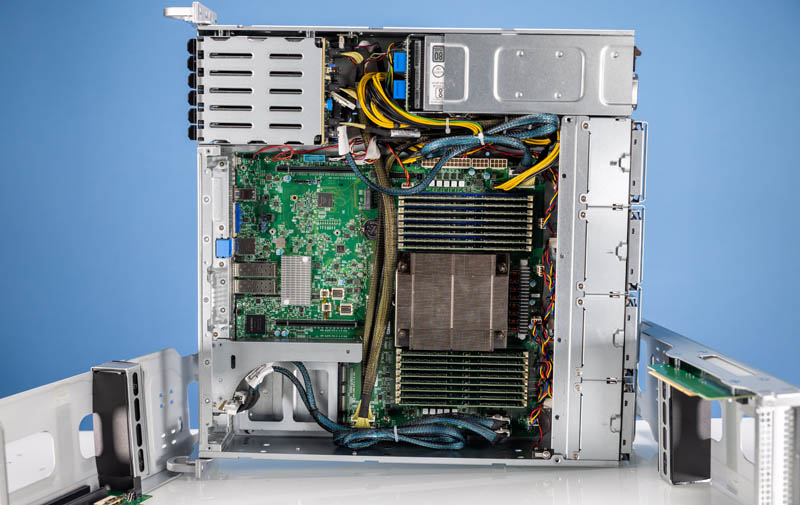Supermicro ARS-210ME-FNR OS Support
Something we were very excited about with this server was the OS support. When we first started reviewing Arm servers, everything was delicate, and things often did not work. Here is the server running the VMware ESXi on Arm Fling.

Also, these days, one can just install OSes via IPMI. That may sound trivial, but often during the Cavium ThunderX days, installing Ubuntu required a BIOS update, maybe some firmware updates, a few patches, and so forth. Now the experience is easy.

With 128 cores and 512GB of memory, the next question is power consumption.
Supermicro ARS-210ME-FNR Power Consumption
The system idled in VMware and Ubuntu at around 132W on a single PSU, and 135W on two. These are high-efficiency 1.6kW 80Plus Titanium PSUs, but they are being used at around 1/10th their capacity at idle.

Getting this system, without any add-in cards, to 365W was fairly trivial. If we started using the two Samsung U.2 NVMe SSDs, we could get into the 395-400W range. This is frugal on power compared to some other systems we have seen. Having 128 Arm cores in this power budget is solid.
STH Server Spider: Supermicro ARS-210ME-FNR
In the second half of 2018, we introduced the STH Server Spider as a quick reference to where a server system’s aptitude lies. Our goal is to start giving a quick visual depiction of the types of parameters that a server is targeted at.

As we would expect, this single socket solution is not trying to be the densest compute or storage platform. Instead, it is focused on providing an edge platform for networking cards and accelerators.
Final Words
Overall, this is a system that was quite impressive. The system just worked, and that was really nice. Boot times were quite long due to the 512GB of memory, but otherwise, it was very familiar, even with OpenBMC being used.

The platform itself looks a lot like the x86 systems that share a similar form factor and target market. Naturally, the biggest difference is that Supermicro’s system has the Ampere Altra Max M128-30. Supermicro also makes x86 versions of this system, so if one wanted to deploy both, there are options from the same company.

From a technology perspective, it is great to see Supermicro adopt both OpenBMC as well as the OCP NIC 3.0 form factor alongside the Ampere Altra (Max) line. This server is really designed for an organization that wants a new Arm-based server with open technologies and non-proprietary building blocks. Supermicro, for its part, delivered on making the ARS-210ME-FNR an easy-to-use vehicle for adopting Arm computing at the edge.




Very cool server. It’s nice to see something smaller for a change. Only one question… How long until we see an Altra or Altra Max based high-end workstation? I think THAT would be really neat, what with all the ground Ampere has gained so far.
Hi Stephen
We want to introduce you to reference the following 2U4GPU ArmServer which is another Server of the Mt. Hamilton program, four double-width GPUs with IO assessable in a 2U form factor system.
https://www.supermicro.com/en/products/system/megadc/2u/ars-210m-nr
Regards,
Roger
It’s great to see an Ampere server reviewed like a x86 server at STH. This makes it seem like they’re real not the $hitb0xes of Cavium
Stephen Beets, haven’t you see Avantek’s ARM desktop offering yet? If not, then https://store.avantek.co.uk/arm-desktops.html
@KarelG
Thanks so much for your reply. I was not aware of either Avantek or their products until you posted (I’m sure Dr. Cutress, aka TechTechPotato, covered their products at some point, I just either missed that or I simply don’t remember it). So cool to see that Ampere’s Altra and Altra Max processors are actually usable for things other than cloud and edge servers. Also, I like the case design of the Avantek workstations. Very neat. Thanks for sharing, man. Hopefully one day some years from now, I’ll find an Altra or Altra Max on eBay to buy and add to my CPU collection. :-)
@Roger Chen
Thank you for your reply and link. I wasn’t necessarily thinking of buying one (I’m not a telco nor do I have anywhere near enough money to afford one), but I did visit your link just to see what was there. Very nice and I’m wishing you and the Supermicro team all the best, saleswise. :-)
That’s a clickbait image. The CPU doesn’t really run outside of the server, it is on the inside. Stop making things up.
Can’t say there’s any surprise there. ARM will never be suitable for heavier workloads without making itself identical to x86 in terms of complexity, power consumption, and price. It works when used for its intended purpose – low-power devices that don’t need heavy CPU resources.